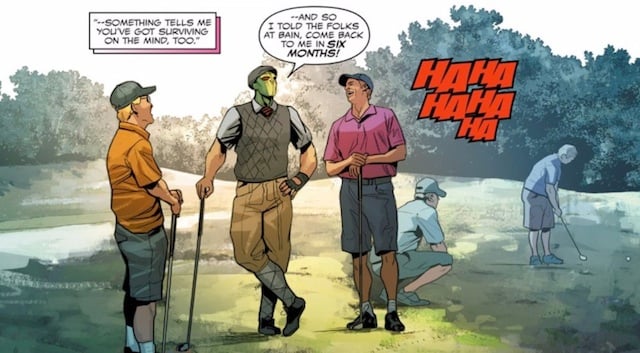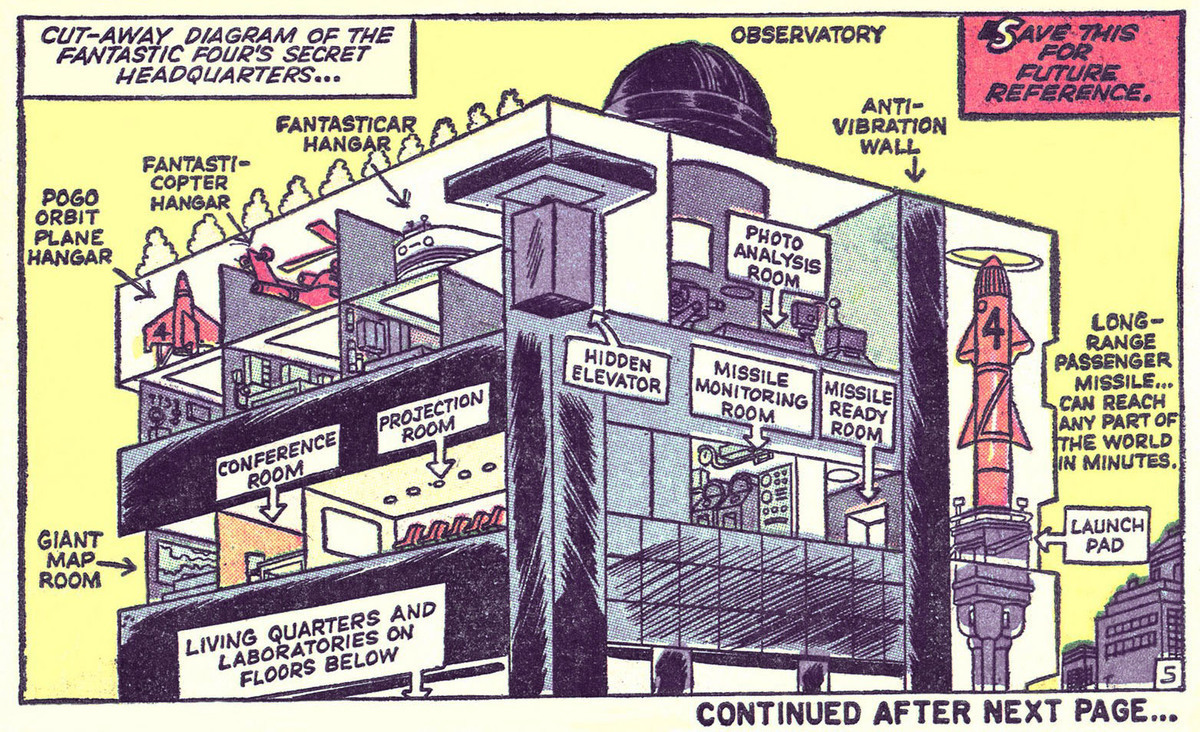
To wit:
Captain America: Sam Wilson #4—written by Nick Spencer with art by Paul Renaud, Romulo Fjardo, and Joe Caramagna—finds its lead character looking a lot different than he usually does. This is the second issue where Sam has been trapped in a werewolf form, the results of a run-in with old Cap villain Karl Malus. Malus’ experiments with splicing human and animal DNA weren’t just garden-variety mad scientist shenanigans; they were R&D for the newest iteration of an old supervillain cadre called the Serpent Society. They’re calling themselves Serpent Solutions now and they’re serving as a metaphor for all the horrible things that happen in the name of turning a profit. Kidnapping people and turning them into giant iguanas? Just another regrettable but necessary fact-of-life decision in today’s business landscape, according to exec leader Viper.”

Comic Book Cartography is a now-dormant blog devoted to maps, charts, diagrams, and other visual explainers of (mostly) fictional worlds found (mostly) in old comic books.
These maps are beautiful, but they’re also packed with definitive detail. I love the stern “SAVE THIS FOR FUTURE REFERENCE” on the first-ever cutaway of the Fantastic Four’s Baxter Building, from issue #3. Two issues ago, you’ve got the FF someplace called “Central City,” and The Thing looking like a poop with arms and a mouth, but already, there’s a fixed architecture for midtown Manhattan offices packed with reference ideas for future storylines. A man, a plan, Jack Kirby.
In these flattened worlds for tiny obsessives, you’ve got your narrative and your database all in one: not just maps, but routes, connections, circuits, ideas, topologies. Really, it’s dataviz, only since comics don’t have, you know, large data sets for running regressions, it’s a lot of tiny illustrations with copious labeling. Still, the future of the modern impulse to an “all in one chart” aesthetic probably starts here as much as anywhere. (Via @justinNXT.)
Update: There’s an active “Comic Cartography” Tumblr that includes more contemporary examples. Also, John Hilgart, the proprietor of Comic Book Cartography, runs an active blog on images from classic comic books called 4CP (for four-color process, naturally). (Thanks, Hampton)
I’ve rediscovered the joys of cereal. It’s the perfect food for me and my go-go lifestyle: fast, easy, and fun! Backslash dot com all day long, you know.







Stay Connected